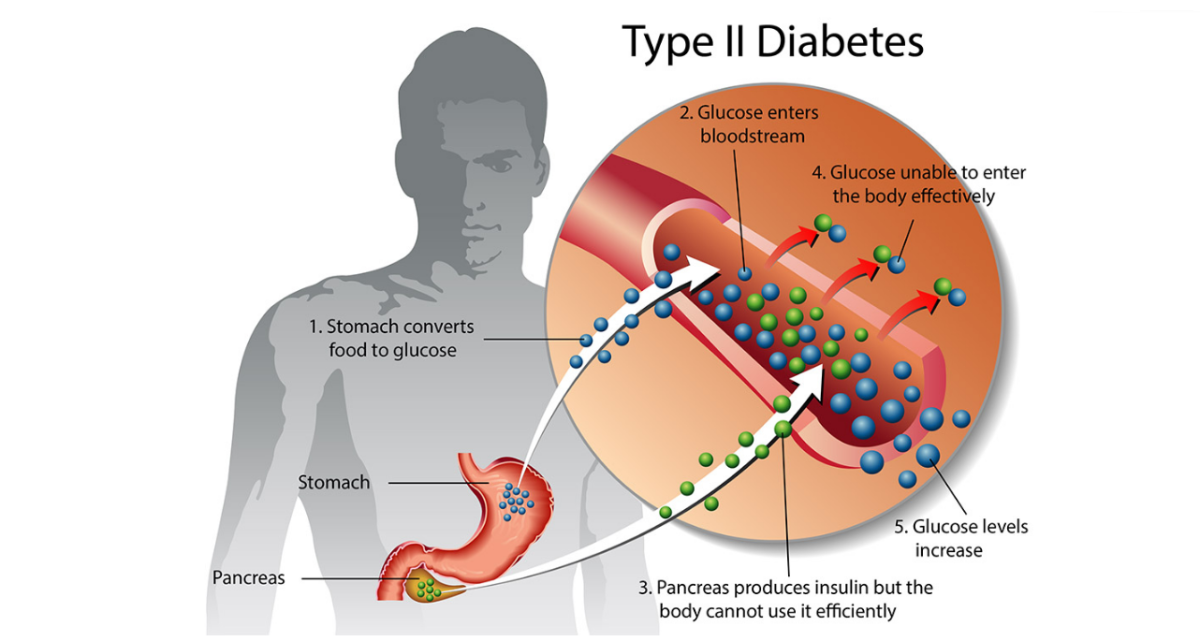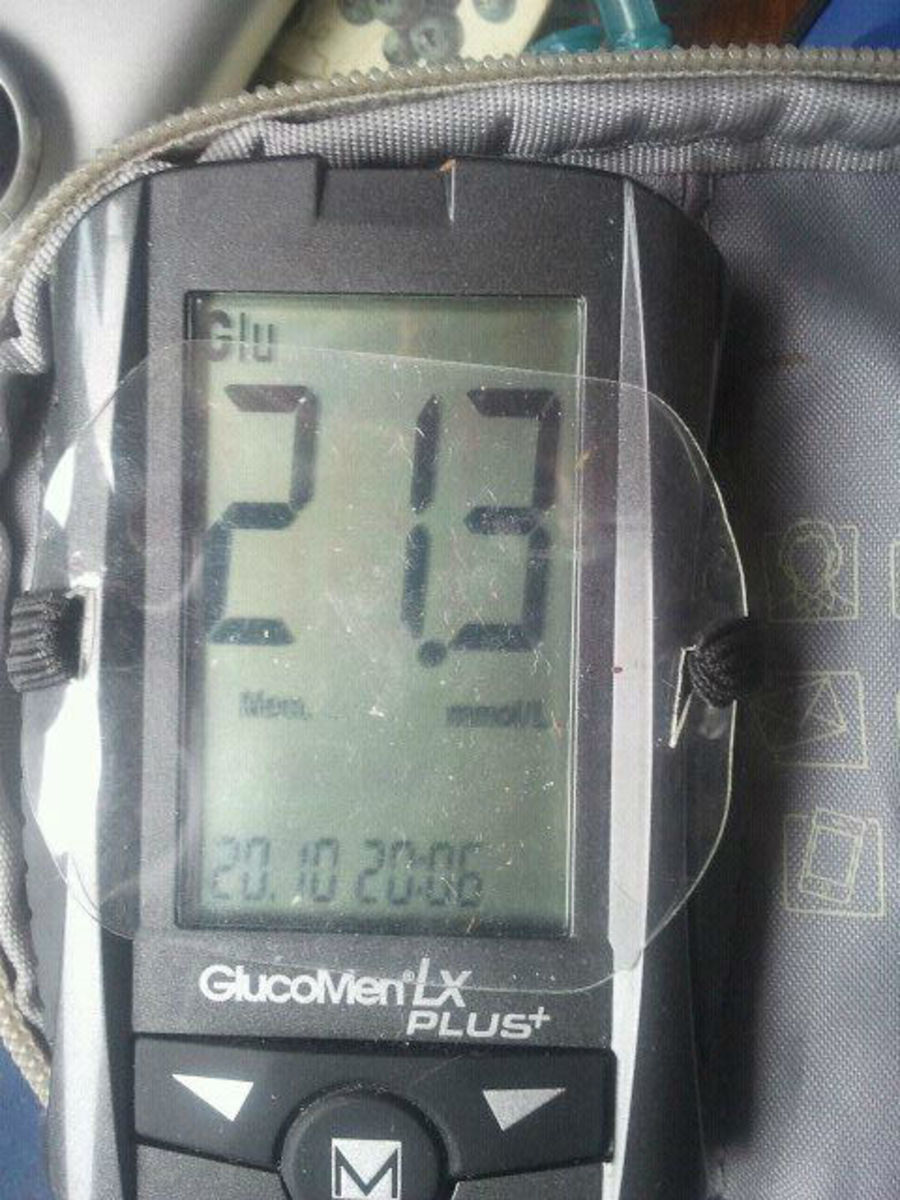Known risks for Type 2 diabetes

Copyright 2012-2013, Kris Heeter, Ph.D.
Recent statistics from the American Diabetes Association indicate that 8.3% of the population in the United States has diabetes -- that number includes children and adults.
Over 8.8 million people have been diagnosed and it is estimated that there are another 7.0 million people that have gone undiagnosed.
What's even more alarming is that a whopping 79 million people have "pre-diabetes" -- at least one in four adults in the United States. Pre-diabetes is a condition that is likely to develop into type 2 diabetes within 10 years unless preventative measures are taken.
What is pre-diabtes and who is at risk?
What is pre-diabetes?
Pre-dibetes refers to blood glucose levels that are higher than normal, but not yet in the diabetic range – a condition often referred to as impaired fasting glucose (IFG) or impaired glucose tolerance (IGT).
Beginning in 2011, both fasting glucose and A1C levels were used to derive estimates for undiagnosed diabetes and pre-diabetes. Statistics are reported on a National Diabetes Fact Sheet available through the Centers for Disease Control and Prevention.
Pre-diabetes is clearly becoming more common in the United States. Those that are considered pre-diabetic typically do not have symptoms. The diagnosis is based on blood sugar testing.
It’s important to note that having pre-diabetes does not mean that diabetes is inevitable. Weight loss and increased physical activity can prevent or delay diabetes onset in those diagnosed as pre-diabetic. Increased activity and weight loss can return blood glucose levels to normal.
Risk factors for Type 2 diabetes
The Centers for Disease Control (CDC) lists the following risk factors for prediabetes and diabetes:
- being overweight or obese
- being physically inactive (exercising less than 3 days a week)
- having a parent, brother, or sister with diabetes
- having a family background that is American Indian, African American, Alaska Native, Asian American, Hispanic/Latino, or Pacific Islander
- giving birth to a baby weighing more than 9 pounds
- being diagnosed with gestational diabetes (diabetes found during pregnancy)
- having high blood pressure - 140/90 mmHg or above
- being treated for high blood pressure
- having HDL ("good," cholesterol) below 35 mg/dL
- having a triglyceride level above 250 mg/dL
- having polycystic ovary syndrome, also called PCOS
- having previously tested positive for impaired fasting glucose (IFG)
- having tested positive for impaired glucose tolerance (IGT)
- having other condition called acanthosis nigricans , characterized by a dark, velvety rash around the neck or armpits
- having a history of cardiovascular disease
Related Articles
Click on the title to read the full article
The Link Between Diabetes, Cancer, PCOS and Acanthosis Nigricans
These three diseases and one skin disorder all have a common denominator. Find out why having one of these diseases may increase your odds for the others.
What Do Diabetes and Mental Illness Have In Common?
Sleep deprivation has been linked to an increased risk of diabetes and psychiatric disorders.
Top 3 Health Risks Linked to Sleep Deprivation
Sleep deprivation has been linked to a number of diseases and health problems including: heart disease, weight gain, and increased viral infections.
Top 4 Tips For Boosting Immunity Naturally
Learn four easy and natural ways to boost your immune system. Simple changes in daily habits can increase the body's immunity which reduces the risk of cold, flu and chronic diseases like cancer, diabetes and heart disease.
Other chronic conditions and diseases associated with diabetes
The following diseases and chronic conditions have been linked to diabetes:
· heart disease
· stroke
· sleep apnea or sleep deprivation
· depression
· chronic inflammation
· cancer
Those with diabetes are at least twice as likely to have heart disease or a stroke compared to as someone who does not have diabetes. People with diabetes tend to develop heart disease or will have strokes at an earlier age.
Research studies indicate that people who are treated for type 2 diabetes have higher incidences of depression. And conversely, a least one study links individuals that are depressed with an increase risk of diabetes.
There is now increasing evidence indicating that people with diabetes are more likely to develop certain kinds of cancer. There are many common risk factors for both cancer and diabetes: most notably weight and a diet poor in fruits, veggies, and whole-grains.
Who should be tested for pre-diabetes or diabetes?
The CDC recommends that anyone 45 years or older should consider getting tested for diabetes, especially those that are overweight.
Those that are under the age 45, should also consider being tested if overweight and have one or more of the additional risk factors listed above.

Prevention
Studies have found that moderate weight loss and exercise can prevent or delay type 2 diabetes among adults that have high risk factors.
Research shows that moderate diet and exercise of about 30 minutes or more, 5 or more days per week typically results in a 5% to 7% weight loss.
There are easy ways to assess how much physical activity you get each week. First, log your exercise for a week or two - keeping track of how many days and the duration of each session. From there, compare it with the CDC recommendations and make changes as needed. The CDC recommends at least 30 minutes a day, 5 days a week - or 2.5 hours a week spread out over 3 days or more.
Next assess what you daily food plate looks like at each meal. Is two thirds of the food you eat fruits, veggies and whole-grains? If it’s less than that, take steps to eliminate processed carbs, sugar, and other processed foods and exchange those with more fresh fruit, veggies and whole grains.
Always discuss any changes you are making in your daily diet and exercise with your doctor. As you trend towards a healthier lifestyle, changes in blood sugar and other factors like cholesterol should be monitored.








